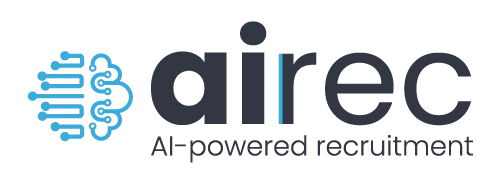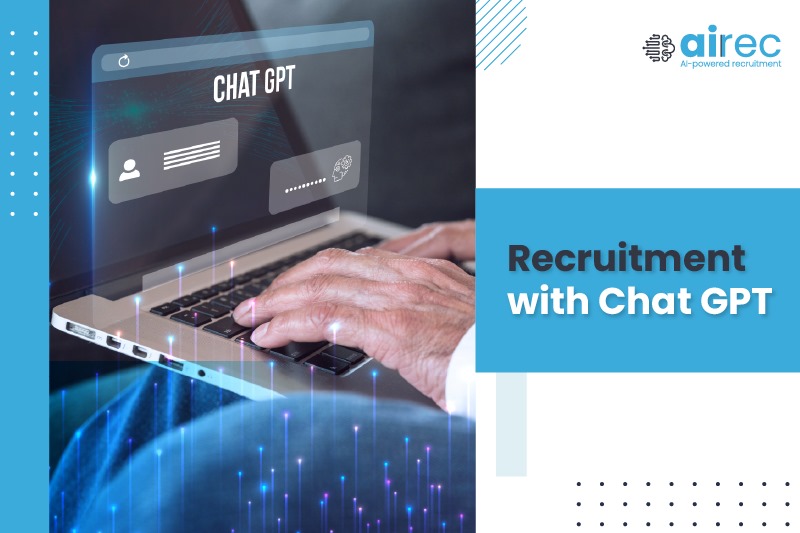I. Introduction
A. Brief overview of recruitment challenges
High applicant quantities, drawn-out screening procedures, and ingrained biases are some of the difficulties faced by the recruitment process. It’s difficult to find the proper talent among a sea of resumes. The integration of ChatGPT and other technologies to improve and expedite the employment process is a result of the growing demand for impartial and effective solutions.
B. Introduction to ChatGPT and its potential role in addressing these challenges
By solving enduring issues, ChatGPT, a revolutionary language paradigm, has the potential to completely change the recruitment environment. ChatGPT emerges as a potent ally when traditional approaches struggle with large application volumes and biases. It can revolutionize the first stages of employment by enabling individualised candidate interactions and fast screening through the use of powerful natural language processing. This blog examines how ChatGPT’s features can improve productivity, lessen prejudices, and reshape the hiring process. It also provides a preview of a future in which AI-driven technologies will be crucial in forming more fair and efficient hiring practices.
II. Technology and Recruitment
- The use of technology in hiring procedures
Technology has completely changed the recruitment process by increasing reach and optimizing procedures. Online platforms enable international talent searching, and applicant tracking systems (ATS) streamline resume parsing. ChatGPT and other AI-powered solutions maximize candidate engagement. The use of technology in hiring signals a change toward efficiency, data-driven choices, and a more competitive employment market.
- Introducing ChatGPT and AI to the field
Organizations’ methods for identifying and engaging talent have completely changed with the introduction of ChatGPT and Artificial Intelligence (AI) in recruitment. AI systems, such as ChatGPT, automate and intelligently handle processes like candidate communication and resume screening. By quickly evaluating large datasets, these technologies improve efficiency and free up recruiters’ time to concentrate on making strategic decisions. Furthermore, ChatGPT’s natural language processing powers enable conversations that are human-like, which completely changes the applicant experience. This blog explores the potential for artificial intelligence (AI), and specifically ChatGPT, to revolutionize the way that businesses find, assess, and communicate with potential candidates.
III. How ChatGPT Operates in Hiring
- Knowing how natural language processing works
Computers can now understand, interpret, and produce language that is similar to that of humans thanks to a field of artificial intelligence called natural language processing, or NLP. It entails writing algorithms that can comprehend written or spoken language’s subtleties while taking context, semantics, and syntax into account. Natural language processing (NLP) enables systems, such as ChatGPT, to handle unstructured data, like text, by identifying patterns, deriving valuable information, and reacting appropriately for the given context. This ability makes it possible for humans and machines to communicate more effectively by enabling tasks like sentiment analysis, text summarization, and language translation to be completed in a way that closely resembles the complexities of human language comprehension.
- The capacity of ChatGPT to evaluate and comprehend candidate data
ChatGPT is transforming the hiring process with its amazing capacity to evaluate and comprehend candidate data. It uses sophisticated natural language processing to understand and assess the nuances of application responses, cover letters, and resumes. The model performs exceptionally well at extracting pertinent data, recognizing critical skills, and evaluating candidate qualifications with a sophisticated comprehension. Because of its versatility, it can handle a wide range of data formats, making it easy for recruiters to sift through large applicant pools. Furthermore, ChatGPT is able to contextualize data by identifying industry-specific jargon and adjusting its analysis appropriately. This capability guarantees a more precise assessment of the suitability of candidates while also speeding up the screening process. To put it simply, ChatGPT’s analytical skills convert data into useful insights that enable recruiters to make well-informed decisions and expedite the candidate selection process.
IV. The Advantages of Using ChatGPT in Hiring
- More effective screening and shortlisting procedures
ChatGPT expedites the screening and analysis of candidate profiles, thereby improving recruitment efficiency. Its ability to process natural language allows for the quick extraction of pertinent data, automating the preliminary screening process. This improves the overall effectiveness of candidate selection by quickening the shortlisting process and guaranteeing a more in-depth and objective evaluation.
- Improved applicant experience with tailored communications
ChatGPT provides individualized interactions that enhance the candidate experience. By utilizing natural language processing, it customizes communication by responding to candidate inquiries and offering pertinent data. This personalized interaction makes a good first impression, demonstrating the company’s dedication to a candidate-focused strategy and raising employee satisfaction levels all through the hiring process.
V. Challenges and Considerations
- Ethical issues with hiring powered by AI
Concerns about transparency, data privacy, and potential biases are raised by AI-driven hiring. It is imperative to guarantee equitable algorithms, protect candidate data, and preserve openness in AI decision-making. Responsible and equitable application of AI in hiring processes requires striking a balance between practicality and morality.
- Hiring process automation while maintaining a human touch
It’s crucial to hire with a human touch while balancing automation. AI expedites procedures, but human interaction is necessary for empathy, intuition, and comprehending the distinctive qualities of each candidate. Finding this balance promotes a more comprehensive and effective hiring process by guaranteeing efficiency and a customized, candidate-centric approach.
VII. Future Trends and Innovations
- ChatGPT’s developing influence on how jobs will be filled in the future
By becoming a crucial component of hiring procedures, ChatGPT is revolutionizing the hiring landscape for the future. Its expanding role promises a more streamlined, objective, and technologically advanced hiring environment. Its functions range from effective candidate screening to personalized interactions. Adopting ChatGPT offers a preview of revolutionary hiring techniques to come.
VIII. Conclusion
- How Airec uses ChatGPT to improve recruitment process for its clients
In order to reduce bias, automate initial screening procedures, and provide personalized candidate interactions, Airec has integrated ChatGPT into its application interfaces. Its ability to process natural language improves efficiency and offers a more thorough and impartial assessment of candidates, which in turn optimizes and improves the hiring process as a whole.
Book a demo with us today and know more about AI for recruiting: http://34.93.237.169/demo/
X. References
A. Citing reliable research, papers, and other sources to back up the arguments made.
1. Davenport, T. H., & Kalakota, R. (2019). “The AI Advantage: How to Put the Artificial Intelligence Revolution to Work.” MIT Press.
2. Dolezal, F., et al. (2021). “How Chatbots and AI Will Change the Future of Recruiting.” Harvard Business Review.
3. Sharma, P., & Bhattacharya, S. (2020). “The role of artificial intelligence in talent acquisition.” Journal of Organizational Effectiveness: People and Performance, 7(4), 375-390.


Leave a Reply